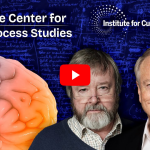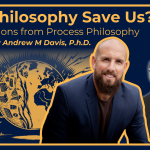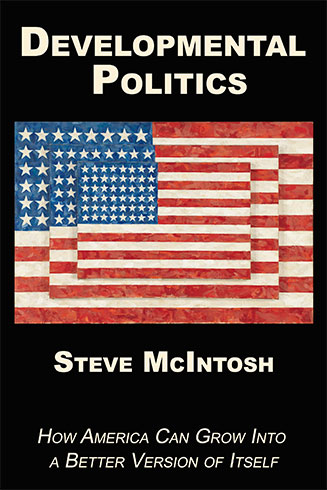Evolution’s Purpose
Chapter Seven: Purpose in Evolution
…/snip/…
The Experience of Purpose
Purpose is in the universe. We all have it and experience it directly and regularly. And as we have seen, all forms of life also have purpose. Although the purposes of simple life forms may be genetically instinctual and apparently mechanical, these creatures’ interactions with the world are nevertheless non-computational—even with exhaustive knowledge of their present state, the exact future state that will result from their choices cannot be calculated with any possible computer.1 Indeed, it is this purposiveness in living things (or at least quasi-purposiveness) that actually distinguishes life from non-living matter. This unique ability of living things to strive and choose is the primary reason why biology cannot be reduced to physics. And to choose is to evaluate—every choice, no matter how instinctual, constitutes an evaluation. Therefore, because life forms are “spontaneous evaluative systems,” their ability to strive and choose allows them to evolve non-deterministically in ways that matter alone cannot—it is the inherent striving of life forms which enables them to fill every available ecosystemic niche, and which results in the increasingly complex phenomenon of the evolving biosphere. Moreover, it is this spontaneous creativity inherent in biological evolution that allows life to evolve at a much faster rate (once it gains momentum) than the glacial pace of deterministic geological evolution.
Just as the first-order purpose (or quasi-purpose) possessed in increasing measure by all life forms is the primary factor that distinguishes them from matter, the second-order purpose (self-reflective purpose) that emerges in humans is similarly the primary factor that distinguishes us from other forms of life. Our human sense of purpose is an aspect of our free will, and as we discussed in chapters 2 and 3, it is the freedom of our will that gives us the ability to perceive and thus pursue higher values. And it is this emergent capacity to discern truth and make moral distinctions that gives us the ability to evolve our culture. Because of our sense of higher purpose—because we can feel the ever-widening potential of a better way—humans are continuously driven and drawn toward more complex forms of social organization. By benefiting from, and participating in, humanity’s unique form of cultural evolution, human consciousness is able to evolve beyond its biological origins. Moreover, humanity’s expanded capacity for purposiveness allows cultural evolution to unfold at a faster pace (once it gains momentum) than biological evolution, due to the superior power of “actual selection” over natural selection. And as human cultural evolution accelerates, our purposes and values become more refined and are gradually transformed from the negative motivations of fear and the avoidance of pain, to more positive motivations toward our expanding conceptions of beauty, truth, and goodness.
Thus, in the scheme of evolution, creature purpose is far more than a “trace element,” it is not merely epiphenomenal; it is actually a major feature of the development of the universe. Emergent purpose within life forms is a primary driver of the evolutionary process and a seminal factor that distinguishes evolution’s major levels. Again, life’s inherent purpose differentiates it from matter, and humanity’s transcendent purpose differentiates us from other forms of life.
The fact that we all have a direct experience of purpose—that we know what it is like from the inside—gives us a sense of the kinship between our human awareness of purpose and the purpose experienced by all forms of life. That is, the purpose of almost all living things is to survive and reproduce—to keep from becoming food, to find food, and to find a mate (in roughly that order). Like animals and even plants, we can feel these biological purposes in our own experience. The feeling of fear, the feeling of hunger, and the feeling of sexual desire are all accompanied by a sense of urgency, and their relief or satisfaction provides a feeling of pleasure or even ecstasy. Among these biological influences, the evolutionary impulse of purpose is particularly acute in the case of our sex drive, wherein the eros of value attraction becomes fully embodied. But as we discussed in chapter 3, this same sense of eros that can be felt in our bodies can also be felt in our minds as we are attracted to the deeper reaches of eros, which Plato described as the “passion for intellectual beauty and wisdom, [that] culminates in the mystical vision of the eternal, the ultimate source of all beauty.”2
The way purpose is distributed across the evolutionary spectrum lends itself to a comparison with other universal forces. For example, one of the most significant aspects of Newton’s theory of gravity was his revelation that the force that moves the planets is the same force that causes apples to fall from trees. And the fact that this gravitational force is consistent across scale gives us a sense of its lawful and universal nature. So as we now consider purpose as a similar (albeit non-physical) kind of universal force, we can perhaps sense that the purpose which causes plants to grow and birds to build nests is, in some ways at least, the same purpose that drives us to seek our own self-actualization and to give our gift to the world. Moreover, by contemplating the “phenomenology of purpose,” we can begin to sense how our individual, micro-purposes are related to the macro-purposes which we are attempting to discover within evolution as a whole.
Although the major events of emergence found within human cultural evolution clearly result from the purposes of individual humans, the causes of specific forms of emergence in biological evolution cannot be directly tied to the individual purposes of organisms. At least not according to standard Darwinian theory. However, we can perhaps sense that there is nevertheless a connection between the micro-purposes of individual life forms and the macro-purposes exhibited by biological evolution’s generation of value over time. And the nascent sciences of epigenetics and adaptive mutation (discussed in chapter 2) may soon be able to demonstrate this connection explicitly.
Evidence for Purpose in Evolution
Some philosophers have argued that claims for purpose in evolution are completely devoid of evidence, and that the triumph of the Darwinian account is that it shows how evolution functions through blind mutation and environmental selection, without the need of any purpose whatsoever. In response to this I can begin by observing that “purpose” is not a material entity subject to investigation by science. Scientists cannot even measure or prove purpose in humans, so we certainly cannot expect their instruments to detect purpose in evolution as a whole. As noted, scientists have not been able to fully explain how purpose or will functions within the neurological structures of the human brain, and many scientists go so far as to argue that free will is an illusion. So the only evidence for purpose in humans is their apparently purposeful behavior. And as we will see below, it is the apparently purposeful, emergent behavior of evolution that provides similar evidence for its purpose.
As we discussed in the previous chapter, scientific examination of the physical features of cosmological evolution reveals compelling evidence that the universe is organized for life. Yet the fine-tuning of the pre-biotic physical universe only reveals an apparent purpose forevolution. If we want to find direct evidence of purpose in evolution, we must look to the presence of life and its inherent agency. And if we want to discover the comprehensive purpose of evolution as a universal process, our investigation must be broadened beyond matter and life so as to include the psychosocial evolution of humanity. Evidence for evolution’s purpose is thus found in a set of interconnected observations about the behavior and character of evolution overall. As a preview of our forthcoming discussion, these observations can be summarized as follows:
- Evolution generates value—it progresses by emergent steps that result in an increase in both instrumental value and intrinsic value. The nested structure of development that results from evolution’s 13.7 billion year trajectory of growth has achieved unfathomable value, and it is in this relatively consistent movement toward value that we can recognize purpose.
- Evolution exhibits a rising flow of creativity that consistently overcomes entropy, ingeniously solves difficult problems by navigating through immense hyperspaces of possibility, produces astonishing diversity and originality, and continually transcends itself through the emergence of radically novel forms and new levels of organization.
- Evolution’s purpose can be directly felt within us across a spectrum of experience that includes biological, personal, social, and spiritual impulses for improvement. The kinship between our individual purposes and the overall purpose of evolution is found in the way our personal purposes mirror and connect with the larger interdependent structure of wholes and parts that orders the unfolding of evolution throughout the course of its development.
These observations regarding the evidence for purpose in evolution are interrelated, and their individual evidential strength is mutually reinforced by combination. So as we now consider these elements of purpose in sequence, please keep in mind that these arguments are not presented as a “chain,” wherein the weakness of any link undermines the strength of the whole, but rather as a “braided cable,” wherein the otherwise thin strands reinforce each other.
…/snip/…





